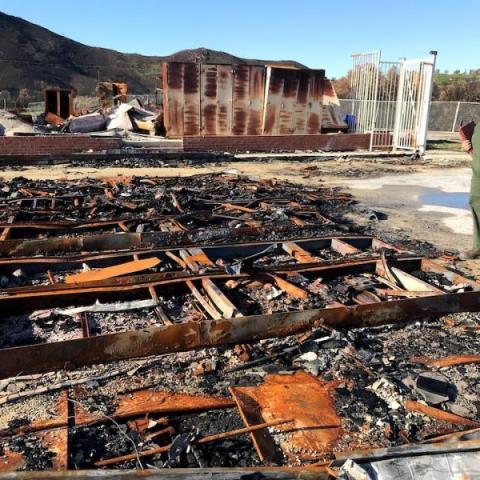
P-39, a female mountain lion who has had at least two litters, was killed when hit by a vehicle on December 3/NPS
A fatal collision removed not only a mature female mountain lion from the population that roams the Santa Monica Mountains of California, but also is expected to lead to the deaths of her three kittens, the National Park Service announced Thursday.
The mountain lion known as P-39 was killed December 3 when she was hit by a vehicle on the 118 Freeway near the Rocky Peak exit, the Park Service said.
“Navigating our complex road network is a major challenge for mountain lions in this region,” said Jeff Sikich, a biologist with Santa Monica Mountains National Recreation Area. “Unfortunately, it’s unlikely that the kittens have developed the hunting skills to survive without their mom.”
Although the death occurred on the evening of December 3, the incident was not reported to the National Park Service until a few days later. Researchers suspected P-39 may have been the victim because her GPS collar stopped functioning and she was in the vicinity a few hours before the collision, but the remains of the animal were never located and witnesses who saw the animal did not report seeing a collar.
After repeatedly searching the area, Sikich located the damaged GPS collar this week in the center divider of the freeway, suggesting that the collar likely came off as a result of the impact with the vehicle.
P-39, estimated to be 5 years old, was first captured and outfitted with a GPS collar in April 2015. She is known to have had at least two litters of kittens, including the three 6-month-old kittens known as P-50, P-51, and P-52.
Since researchers began tracking her in 2015, P-39 had stayed in the natural area north of the 118 Freeway, but a few days prior to her death, she successfully crossed the freeway for the first time. It is not known whether her kittens were traveling with her at the time of her death.

Two of P-39's three most recent kittens. According to the Park Service, they are not expected to survive the loss of their mother/NPS
An uncollared male mountain lion known as P-3 was killed near this same stretch of 10-lane freeway in October 2008. A hiker/equestrian tunnel that has occasionally been used as an undercrossing is located less than one mile away, but the area lacks adequate wildlife fencing to direct animals to the tunnel. During the 18 months that researchers tracked P-3 in 2003 and 2004, he successfully crossed the 118 Freeway a total of 14 times. Although P-3 used the tunnel multiple times, other animals have obviously crossed the road itself, with sometimes fatal results. While viable crossing points are critical to increase connectivity, fencing is also needed to reduce mortality and increase usage.
P-39 is the 13th known case of a mountain lion killed on a freeway or road in the study region since 2002. Southern California’s extensive road network is a major barrier for local wildlife and has particularly hemmed in the mountain lion population in the Santa Monica Mountains. A proposed wildlife crossing on the 101 Freeway in Agoura Hills would provide a connection between the genetically isolated population in the Santa Monica Mountains and populations to the north.
For more photos of P-39, check out this site.
The National Park Service has been studying mountain lions in and around the Santa Monica Mountains since 2002 to determine how they survive in an increasingly fragmented and urbanized environment.


 Support Essential Coverage of Essential Places
Support Essential Coverage of Essential Places







Add comment